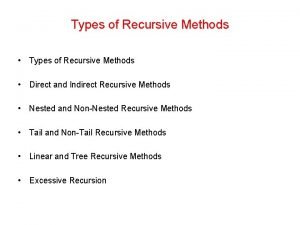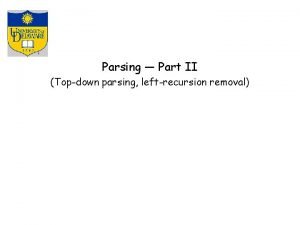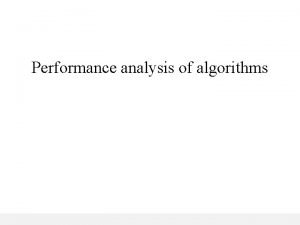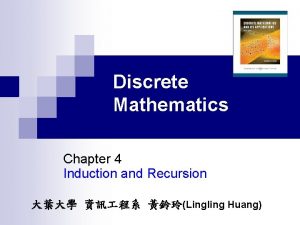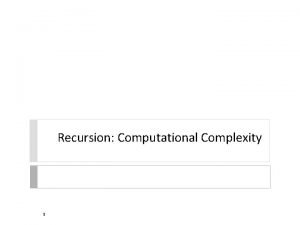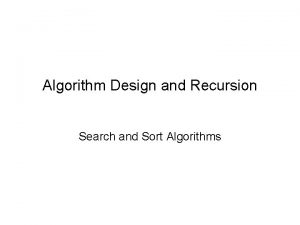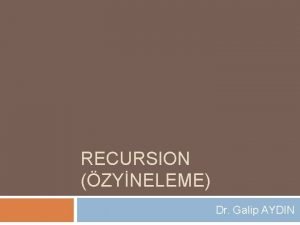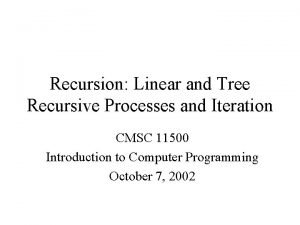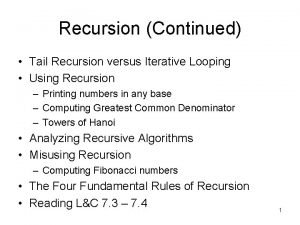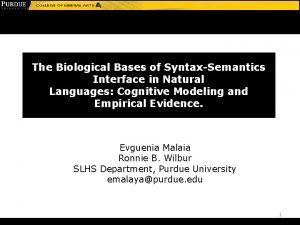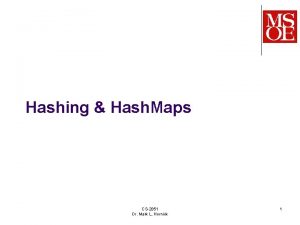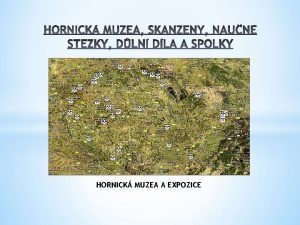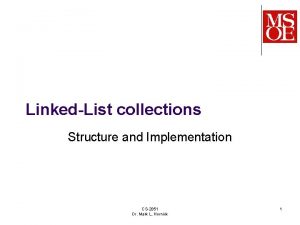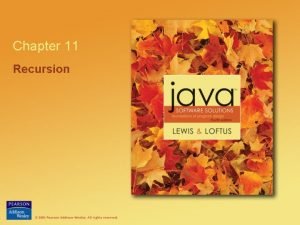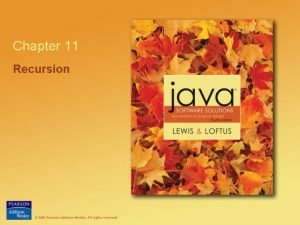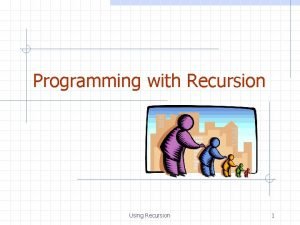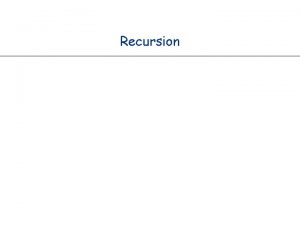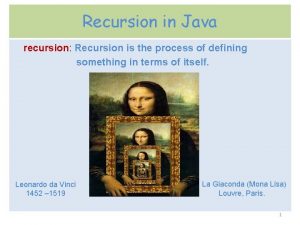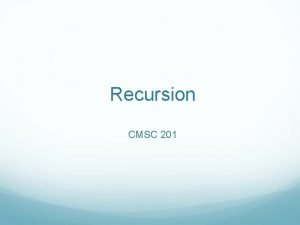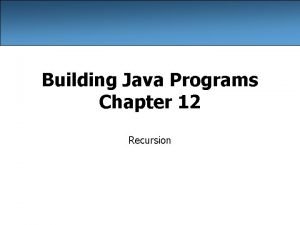Recursion Winter 2005 CS2851 Dr Mark L Hornick














- Slides: 14

Recursion Winter 2005 CS-2851 Dr. Mark L. Hornick 1

Review: Stacks l Classical semantics (behavior) l l l Winter 2005 Elements can only be inserted and removed from the front of the collection This is known as Last-In, First-Out (LIFO) Random-access is not defined CS-2851 Dr. Mark L. Hornick 2

Stack – behavioral methods l l The naming for the structure and the methods is an analogy for how the data elements within the structure accessed Principal methods that define behavior: l l l push() – place an element on (top of) the stack pop() – return and remove an element from the (top of the) stack peek() – return the top element of the stack l Winter 2005 Without removing (popping) it CS-2851 Dr. Mark L. Hornick 3

Program execution and the Stack l Whenever a method is called, information related to the method call is stored l l Winter 2005 within a data structure that exhibits behavior of a Stack This information is referred to as an activation record CS-2851 Dr. Mark L. Hornick 4

The program execution Stack l Stack frame/activation record l l Winter 2005 Each activation record contains: l A variable that contains the return address in the calling method l For each parameter in the called method, a variable that contains a copy of the corresponding argument l For each local variable declared in the called method, a variable that contains a copy of that declared variable. For a method A calling a method B l The activation record for A is pushed before the call to B l Popped when the method B completes execution CS-2851 Dr. Mark L. Hornick 5

Winter 2005 CS-2851 Dr. Mark L. Hornick 6

Stack settings for JVM Each thread in the JVM uses a stack for storing activation records The –Xss<nk> JVM setting l l l sets the maximum stack size that can be used by Java code in each thread to n kilobytes. The default units for n are bytes. n must be > 1 k bytes. The default stack size is 400 kilobytes ("-Xss 400 k") l Winter 2005 "k" for kilobytes or "m" for megabytes CS-2851 Dr. Mark L. Hornick 7

Heap settings for JVM Each thread in the JVM uses the heap for creating new objects The –Xms<n>m JVM setting l l l sets the initial heap size that is used by Java code in each thread to m megabytes. The default units for n are bytes. The initial heap size is 128 MB ( same as "-Xms 128 m“) The –Xmx<n>m JVM setting l l Winter 2005 sets the maximum heap size The default max heap size is 128 MB ( same as "-Xmx 128 m“) CS-2851 Dr. Mark L. Hornick 8

Factorial of x What algorithm would you use to compute x! ?

Recursive definition of x! Is there a way to make use of recursion?

Another Recursion Example: Graphics Fill Algorithm The “Bucket” tool of MS Paint Drag the bucket to an interior point of a graphical shape Paint interior outward toward boundary 1. 2. l Winter 2005 Stop when all interior pixels are filled CS-2851 Dr. Mark L. Hornick 11

Boundary Fill Patterns 4 -connected Winter 2005 8 -connected CS-2851 Dr. Mark L. Hornick 12

Boundary Fill Algorithm details Return if current position is: l l l Boundary color Fill color Otherwise/else l l Set fill color Recursively try neighbors l l l Winter 2005 North, East, South, West (arbitrary) Each neighbor recursively performs algorithm until “return” 8 -connected also tries NE, NW, SE CS-2851 Dr. Mark L. Hornick 13

Boundary fill exercise Winter 2005 CS-2851 Dr. Mark L. Hornick 14
 To understand recursion you must understand recursion
To understand recursion you must understand recursion Winter kommt winter kommt flocken fallen nieder
Winter kommt winter kommt flocken fallen nieder Winter kommt winter kommt flocken fallen nieder
Winter kommt winter kommt flocken fallen nieder Heute mittwoch guten morgen mittwoch winter
Heute mittwoch guten morgen mittwoch winter Direct and indirect recursion
Direct and indirect recursion Left recursion
Left recursion Recursion time complexity
Recursion time complexity Induction and recursion discrete mathematics
Induction and recursion discrete mathematics Recursion time complexity
Recursion time complexity Selection sort using recursion
Selection sort using recursion Recursion nedir
Recursion nedir Linear and tree recursion
Linear and tree recursion Tail recursion vs iteration
Tail recursion vs iteration Telic recursion
Telic recursion




